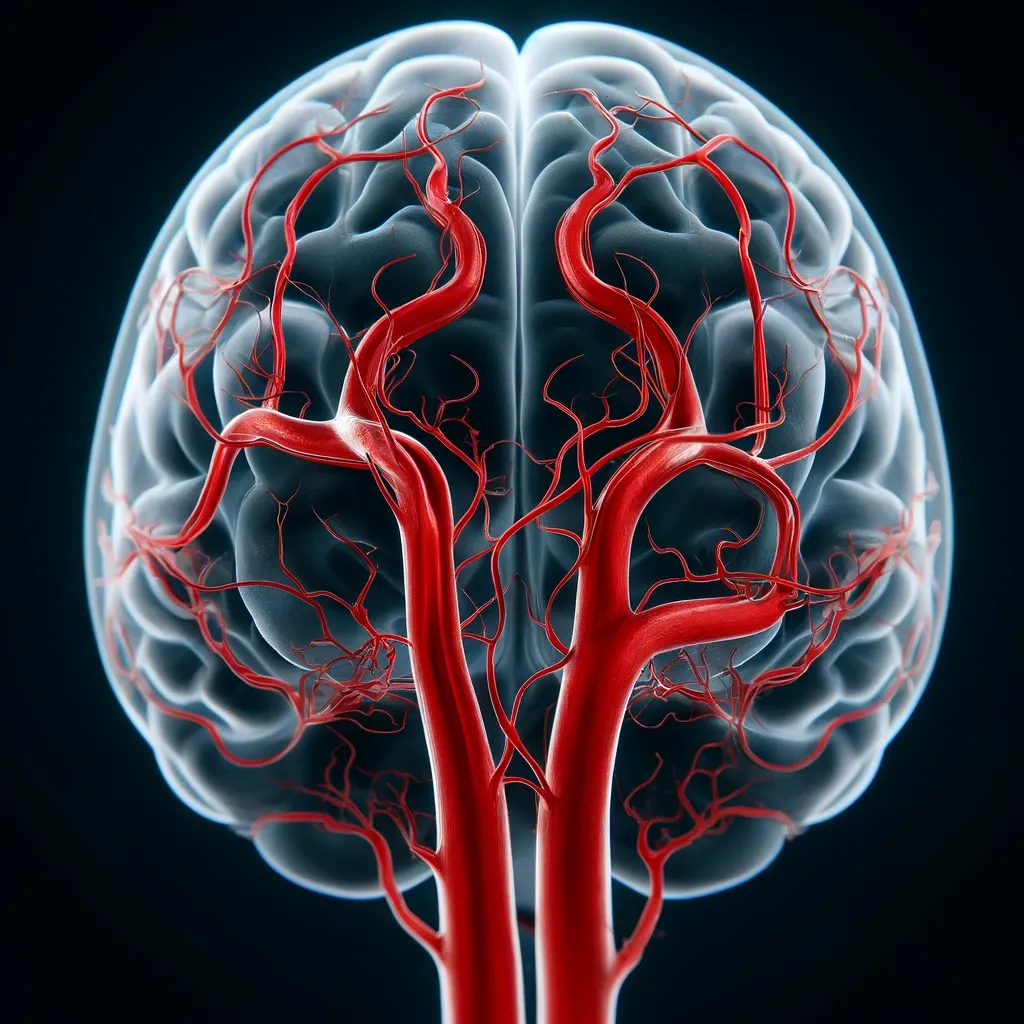What could happen if you don’t treat Moyamoya disease? Could untreated Moyamoya lead to serious consequences? Find out how the condition progresses without proper care and the available treatments.
Moyamoya disease is a rare but serious neurological disorder that affects the blood vessels in the brain. The term “Moyamoya” comes from a Japanese word meaning “puff of smoke,” referring to the appearance of the tangled, small blood vessels that form around the brain due to restricted blood flow. When left untreated, Moyamoya disease can lead to debilitating consequences. But what exactly happens if it’s ignored? Let’s explore how this disease progresses without treatment and why timely intervention is crucial.
What Happens If Moyamoya Disease Is Not Treated?
Moyamoya disease is often a silent condition in its early stages, and symptoms can be vague. However, as the condition advances, the lack of treatment can lead to a series of serious and potentially life-threatening consequences. Here’s a breakdown of the effects of untreated Moyamoya disease:
-
Stroke One of the most severe risks associated with untreated Moyamoya disease is stroke. As the arteries narrow, blood flow to the brain is restricted. This can lead to ischemic strokes, where parts of the brain become deprived of oxygen and nutrients, causing damage.
-
Recurrent Mini-Strokes (TIA) Transient ischemic attacks, or mini-strokes, may occur frequently, leading to temporary neurological symptoms like weakness, numbness, or speech difficulties. Over time, these mini-strokes may lead to permanent disability.
-
Cognitive Decline Reduced blood flow to the brain can affect cognitive functions, leading to memory loss, confusion, and difficulty concentrating. This is particularly dangerous if left unchecked as it can severely impair daily functioning.
-
Seizures Brain ischemia, or lack of blood flow, can trigger seizures in individuals with Moyamoya disease. Seizures can occur without warning and may result in significant injury.
-
Brain Damage Over time, without treatment, ongoing ischemia can lead to irreversible brain damage. This damage can result in motor impairments, speech problems, and loss of basic functions.
-
Life-threatening Complications In some severe cases, untreated Moyamoya disease can lead to hemorrhagic stroke (bleeding in the brain). This is often due to the fragile and abnormal blood vessels that develop as a result of the narrowing arteries.
-
Progressive Degeneration As the disease worsens, the symptoms become more pronounced, and recovery from any stroke or attack becomes less likely. The risk of permanent damage increases exponentially.
It’s important to realize that Moyamoya disease can vary from person to person, and some individuals may experience rapid deterioration, while others may have a more gradual progression. However, the common denominator is that without treatment, the chances of severe disability and even death increase significantly.
👉Learn more about Moyamoya disease treatment👈
What Are the Treatments for Moyamoya Disease?
Now that we’ve discussed the consequences of not treating Moyamoya disease, it’s essential to understand what treatments are available. Early diagnosis and intervention are key to managing this condition effectively.
-
Surgical Revascularization One of the most common treatments for Moyamoya disease is a surgical procedure aimed at restoring blood flow to the brain. The most widely used technique is called “direct bypass,” where a healthy artery from the scalp is connected to the brain’s blood vessels to help bypass the blockages.
-
Indirect Bypass Surgery If direct bypass surgery is not possible, indirect bypass techniques can be used. This involves creating a network of new blood vessels from the scalp to the brain over time, encouraging natural blood flow.
-
Medications Although surgery is the primary treatment, medications may also be used to manage the symptoms. Blood thinners may be prescribed to reduce the risk of stroke, and anticonvulsants can help control seizures.
-
Management of Risk Factors For patients with underlying conditions like high blood pressure or diabetes, controlling these risk factors is essential to prevent further complications.
-
Lifestyle Modifications After treatment, patients are encouraged to adopt a healthy lifestyle, including regular exercise and a balanced diet, to improve overall cardiovascular health.
-
Monitoring Patients with Moyamoya disease require ongoing monitoring through regular brain scans and consultations with a neurologist to track the progression of the disease and to ensure that the treatment is effective.
Moyamoya disease is challenging to diagnose and treat, but with the right interventions, many individuals can manage their symptoms and lead normal lives. Early detection is crucial, so if you or a loved one are experiencing symptoms like recurrent headaches, fainting, or difficulty speaking, seeking medical advice promptly is important.
👉Discover Moyamoya disease treatment options👈
Moyamoya Disease Cure Rate: Can It Be Cured?
While Moyamoya disease doesn’t have a definitive cure, the treatment options available can help manage the symptoms and improve quality of life. But what is the cure rate, and how effective are the treatments?
-
Surgical Success Rates Surgical revascularization has shown a high success rate, with studies indicating that 70-80% of patients experience significant improvements in blood flow and a reduction in stroke risk. These procedures have the potential to prevent further strokes and improve neurological function.
-
Long-term Outcomes Patients who undergo surgery often show good long-term outcomes. However, success rates can depend on the age at diagnosis, the severity of the disease, and how quickly treatment is initiated.
-
Recurrence of Symptoms While the surgery can restore blood flow, Moyamoya disease may still progress over time, especially in cases where the underlying cause is genetic. Some patients may require additional surgeries or medications to manage the disease as it evolves.
-
Quality of Life Many patients who undergo successful treatment for Moyamoya disease report improved quality of life. However, ongoing management is crucial to maintain these positive outcomes.
-
Future Treatments and Research As research into Moyamoya disease progresses, new treatment options are being explored. Advances in genetic therapies and minimally invasive surgical techniques may improve outcomes and even lead to a potential cure in the future.
👉Find out more about the Moyamoya cure rate👈
Conclusion
In conclusion, if left untreated, Moyamoya disease can lead to devastating consequences, including stroke, cognitive decline, and permanent brain damage. However, with early diagnosis and the right treatment, such as surgical revascularization, patients can experience significant improvements and a reduction in symptoms. While a definitive cure remains elusive, the current treatments available can help individuals manage the disease and prevent further complications. If you or someone you know is showing symptoms of Moyamoya disease, it is vital to seek medical attention as soon as possible to ensure the best possible outcomes.
As the famous saying goes, “An ounce of prevention is worth a pound of cure.” Early intervention is the key to avoiding the worst effects of Moyamoya disease, so don’t wait—get checked today.






